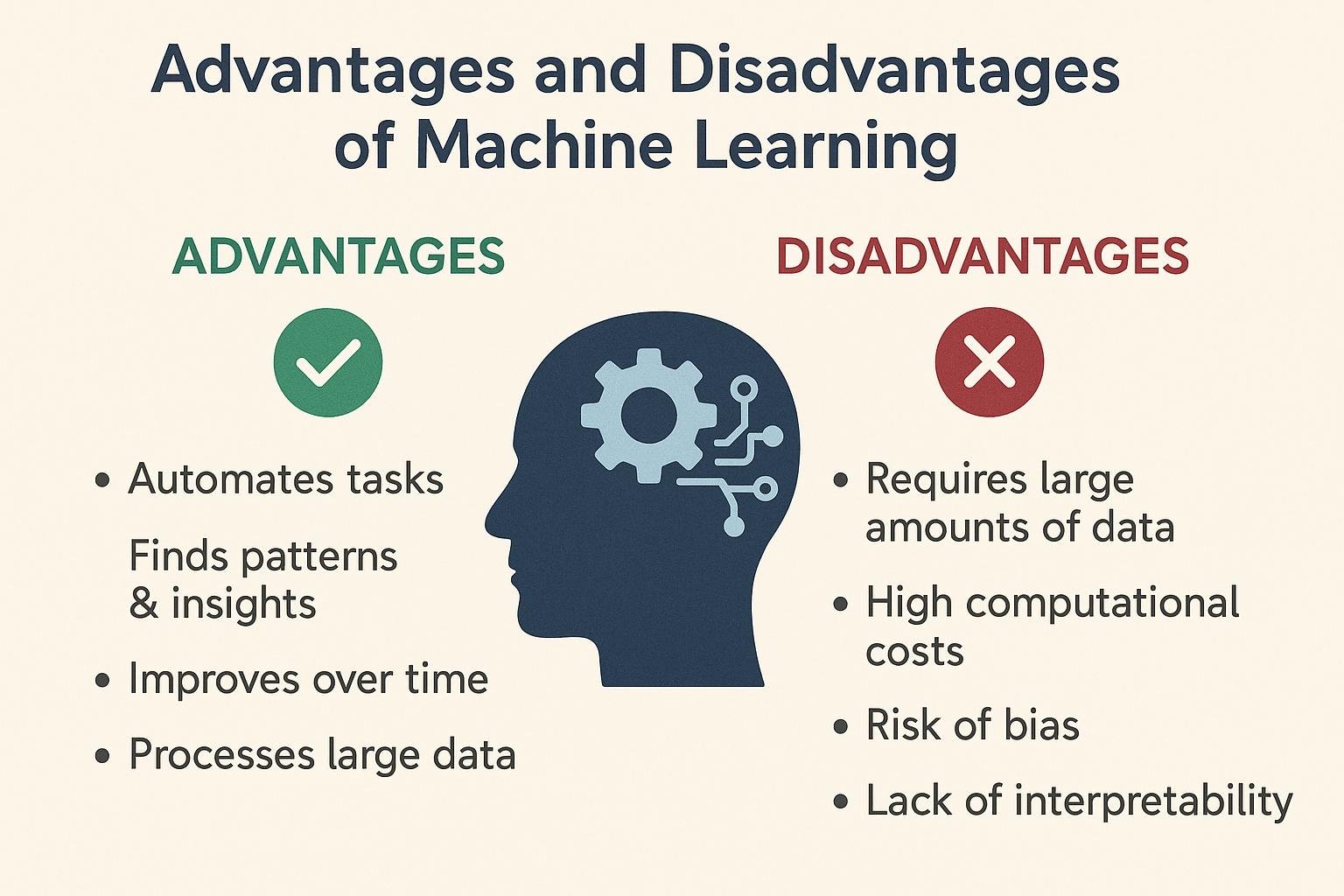
Machine learning (ML) is revolutionizing industries by enabling computers to learn from data, adapt, and make decisions with minimal human intervention. Whether it’s personalized recommendations, fraud detection, or predictive analytics, ML is changing how businesses and individuals operate. However, like any technology, machine learning has its pros and cons.
In this blog, we explore the advantages and disadvantages of machine learning and how they impact real-world applications.
Advantages of Machine Learning
1. Automation of Processes
Machine learning algorithms can automate repetitive and rule-based tasks, saving time and resources. For example, email filtering, data entry, and chatbots are powered by ML automation.
2. Improved Decision-Making
ML models can analyze vast amounts of data and extract actionable insights. In sectors like finance, healthcare, and retail, ML enables faster and more accurate decisions.
3. Handling Multidimensional Data
Machine learning excels at processing complex, high-dimensional datasets that are difficult for traditional algorithms. This makes it ideal for big data applications.
4. Continuous Improvement
With more data, machine learning systems continuously learn and improve. For instance, recommendation systems on Netflix or Amazon become more accurate over time.
5. Wide Range of Applications
ML is used across diverse fields from detecting diseases in medical imaging to optimizing logistics in supply chains and enhancing customer experiences through personalization.
Disadvantages of Machine Learning
1. Data Dependency
ML models heavily rely on quality and quantity of data. Inaccurate, incomplete, or biased data can lead to poor model performance and misleading outcomes.
2. High Cost of Implementation
Developing, training, and deploying machine learning models require significant computational resources, skilled personnel, and infrastructure, which may not be affordable for small businesses.
3. Black Box Nature
Many ML models, especially deep learning networks, are not easily interpretable. This lack of transparency can be a major drawback in applications that require explainability (e.g., healthcare or law).
4. Risk of Overfitting
ML models can sometimes learn too much from training data, capturing noise instead of actual patterns. This leads to overfitting, where the model performs well on training data but poorly on unseen data.
5. Ethical and Security Concerns
ML systems can unintentionally perpetuate biases present in training data. There’s also the risk of adversarial attacks where slight changes in data can mislead a model.
Conclusion
Machine learning offers powerful benefits such as automation, accuracy, and scalability but it’s not without challenges. Understanding both the advantages and disadvantages of machine learning helps businesses and developers make informed decisions and implement ethical, efficient, and secure AI systems.
If you’re considering machine learning for your business, weigh the pros and cons carefully and consult with experienced AI professionals to build responsible solutions.






